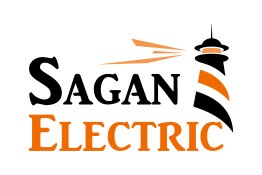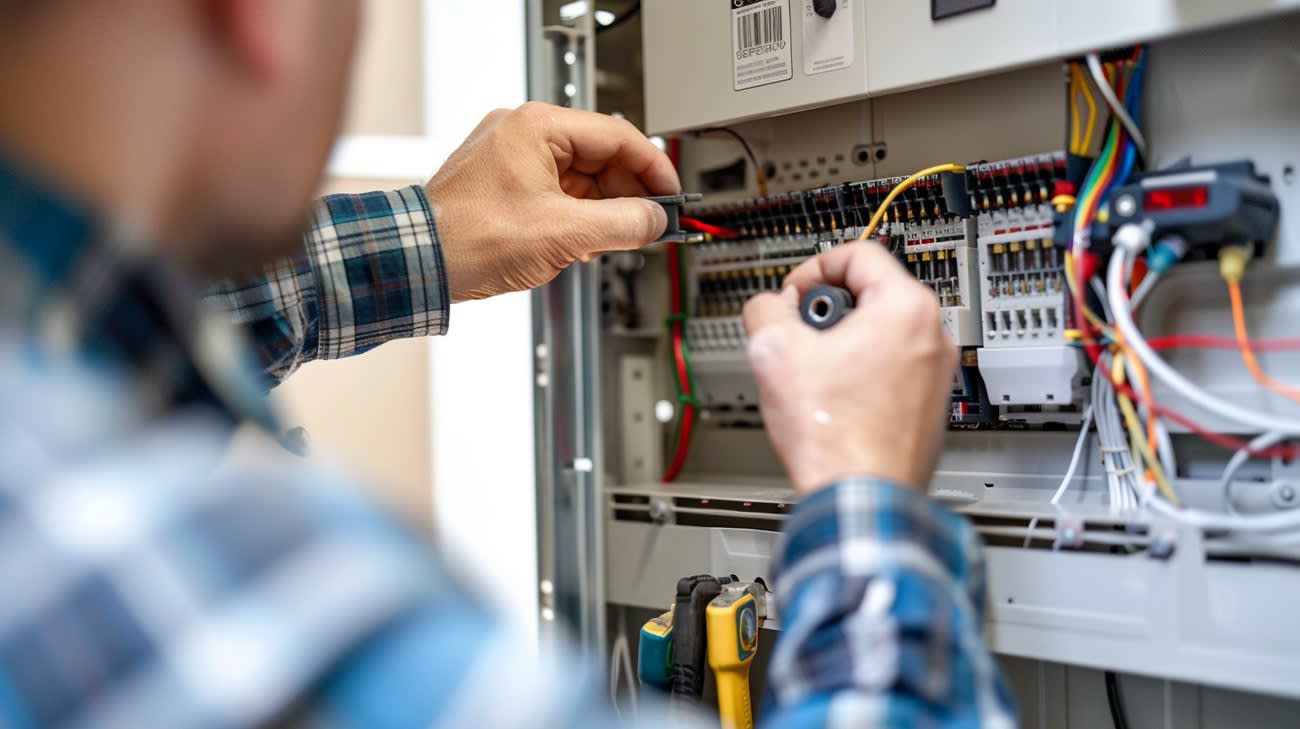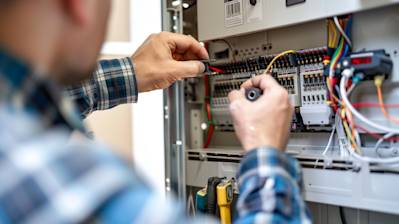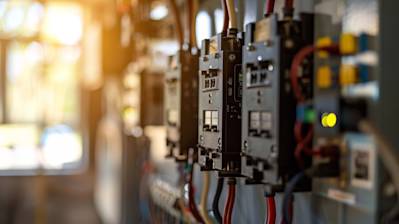Surge protection is an integral aspect of safeguarding your electrical appliances and systems from unexpected power surges. In today's tech-driven world, where our homes and businesses are laden with electronic devices, ensuring that all these devices are protected against electrical surges is more critical than ever. This comprehensive guide will walk you through everything you need to know about surge protection installation and its importance.
Understanding Power Surges
Before diving into the installation process, it’s essential to grasp what power surges are. A power surge is a sudden spike in electrical voltage within the electrical grid. Even a short surge can affect the sensitive electronics in your home or office by causing damage or, in some cases, completely frying the internal components.
Common Causes of Power Surges
- Lightning Strikes: While they occur less frequently, lightning strikes can cause significant surges in power lines.
- High-Power Electrical Devices: Devices like elevators, air conditioners, and refrigerators that require a lot of power when turned on or off can cause spikes.
- Faulty Wiring: Bad wiring in your electrical grid can lead to unexpected surges.
- Utility Switching: The local utility company can cause a surge when switching power grids.
Importance of Surge Protection
Protects Your Investment
Investing in surge protectors ultimately safeguards your investment in high-quality and expensive electronic equipment. By installing surge protectors, you help prolong the lifespan of these items.
Prevents Data Loss
For businesses and individuals alike, data loss can be devastating. Surge protectors help prevent sudden power outages and the potential loss of critical data stored in electronic devices.
Enhances Safety
Beyond protecting your appliances, surge protectors reduce the risk of electrical fires caused by power surges, adding a layer of safety to your home or office.
Types of Surge Protectors
Understanding the types available will help you make an informed decision when considering surge protection installation.
Whole-House Surge Protectors
Installed at the electrical panel, whole-house protectors provide comprehensive protection by blocking surges coming from outside your home.
Power Strip Surge Protectors
These are plug-in devices suitable for protecting individual electronic devices. They are versatile and can be used for computers, TVs, and other appliances.
Uninterruptible Power Supplies (UPS)
A UPS not only acts as a surge protector but also provides backup power. This ensures that your device continues to run even when there's a momentary disruption in power.
How to Choose the Right Surge Protector
Selecting the right surge protector involves understanding a few key factors:
- Surge Rating: Measured in joules, this rating indicates how much energy a protector can handle. The higher the joules, the better the protection.
- Clamping Voltage: This is the voltage level at which the protector begins to redirect the excess electricity. Lower clamping voltage offers better protection.
- Response Time: A shorter response time ensures faster protection after detecting a surge.
Steps for Surge Protection Installation
Ready to take action? Here’s a step-by-step guide on how to install surge protection in your home or office.
1. Evaluate Your Needs
Consider the devices you need to protect and compute the total power usage to determine the appropriate level of protection.
2. Choose the Right Surge Protector
Based on your needs, select a type of surge protector - whole-house, power strip, or UPS - that fits your requirements.
3. Installation of Whole-House Surge Protectors
- Safety First: Turn off the main power supply before you begin installation.
- Installation: Connect the surge protector according to the manufacturer's instructions, typically near the main electrical service panel.
- Testing: After installation, check the device to confirm it is functioning correctly.
4. Install Power Strip Surge Protectors
- Select Outlet: Use a grounded outlet for the surge protector.
- Plug-In Devices: Connect your devices to the power strip, ensuring that they are securely plugged in.
Maintenance of Surge Protectors
While installing surge protection is essential, maintaining it guarantees long-lasting protection. Consider these tips:
- Regular Inspection: Periodically check the protectors for any signs of damage or wear.
- Test Functionality: Use a surge protection tester if available, to ensure devices are working correctly.
- Replace When Necessary: If a surge protector handles a significant surge, or after several years of use, it's wise to replace them to ensure optimal protection.
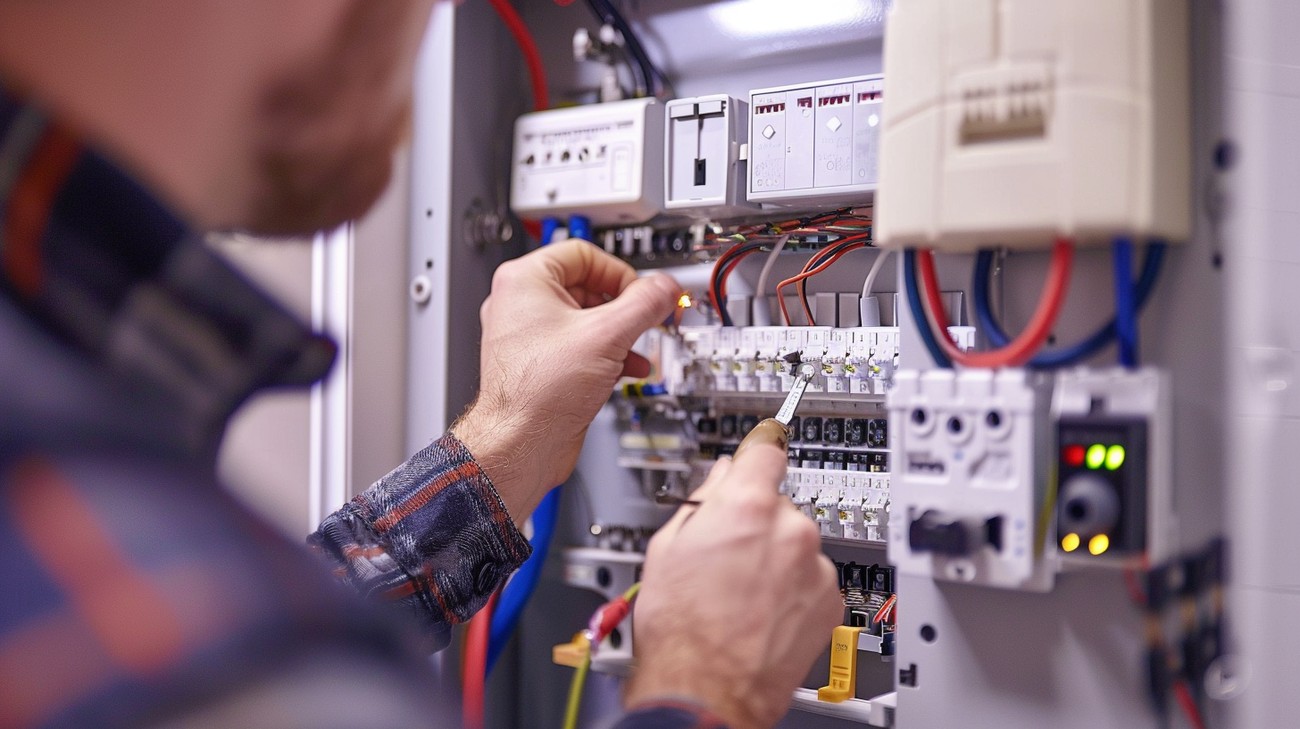
Frequently Asked Questions About Surge Protection Installation
Why is surge protection installation important?
Surge protection installation is crucial because it safeguards your electrical devices and home appliances from voltage spikes, which can cause irreversible damage. Power surges can happen due to lightning strikes, power outages, or when large electrical devices, like air conditioners, switch on and off. By installing proper surge protection, you can prevent the hassle and expense of replacing expensive electronics and ensure the safety of your home.
How does surge protection work?
Surge protection works by detecting excess energy triggered by a power surge and diverting it safely into the ground. This is typically managed through a surge protector device either at the service panel level or at individual outlets. When excess voltage comes through the line, the surge protector channels it away from connected equipment, preventing any damage and maintaining the normal flow of electricity.
What types of surge protection devices are available?
There are various types of surge protection devices available, each catering to different needs. The most common ones include whole-house surge protectors, which are installed at the main electrical panel to guard the entire wiring system, and point-of-use surge protectors, which are used at individual outlets for specific devices like computers or televisions. Additionally, power strips with surge protection serve as an accessible option for protecting multiple devices in one area.
How do I know if I need surge protection installation in my home?
You need surge protection installation if you want to ensure the longevity and safety of your electrical appliances. If your area experiences frequent thunderstorms, power outages, or has an older electrical infrastructure, installing surge protection is particularly beneficial. Assess the risk of voltage spikes and consider factors like the number of electronic devices you use, and whether your home insurance covers electrical damage, to determine your need for surge protection.
Can I install surge protection devices myself?
While some point-of-use surge protectors, like power strips, can be easily installed by any homeowner, installing a whole-house surge protection system is best left to professionals. A licensed electrician should perform the installation to ensure it complies with electrical codes and offers optimal protection. Professional installation ensures that the surge protection device is integrated correctly and reduces the risk of electric shock or fire hazards.
How long do surge protection devices typically last?
Surge protection devices have a lifespan that can vary based on usage, quality, and the frequency of power surges they manage. On average, point-of-use protectors may last between three to five years, while whole-house protectors can last longer, often five to ten years. Regularly check your surge protectors for any signs of wear or damage, and replace them immediately if they seem compromised to maintain effective protection.
Is there any maintenance required for surge protection devices after installation?
Surge protection devices typically require minimal maintenance but regular checks are recommended. For whole-house protectors, you might need to have an electrician inspect the system periodically to ensure it’s still functioning correctly. For power strip surge protectors, occasionally check the indicator light and replace them if the light is off, as it signals that the protector might no longer offer surge protection. Keeping up with these checks ensures continuous protection for your electronic devices.
Are there any limitations to surge protection installation?
Surge protection installation, while highly effective for managing power surges, doesn’t protect against all electrical issues. It won’t prevent physical damage caused by direct lightning strikes or compensate for poor electrical infrastructure in homes. Surge protectors also won’t fix grounding issues — it’s essential that your home’s electrical system is properly grounded for them to function effectively. Understanding these limitations can help set realistic expectations for the performance of surge protection devices.
Can surge protection installation help reduce energy bills?
Surge protection installation doesn’t directly reduce energy bills because its primary function is to protect against voltage spikes, not manage energy consumption. However, indirectly, it might save you money by extending the life of your electronic devices, meaning you won’t have to replace them frequently due to electrical damage. Well-maintained electrical appliances are generally more energy-efficient, offering a slight advantage in utility cost-effectiveness.
How much does surge protection installation cost?
The cost of surge protection installation varies depending on several factors, such as the type of protection (whole-house vs. point-of-use), brand and quality of devices, and labor charges from electricians. Whole-house surge protectors are generally more expensive due to the complex installation process, often ranging from $300 to $700, while point-of-use protectors are much cheaper, ranging from $20 to $100 per device. Balancing cost with the level of protection needed is key to a cost-effective investment.

Cost Breakdown
Typical Price Ranges
When it comes to surge protection installation, the costs can vary significantly, ranging anywhere from $100 to $2,500. This wide range covers both whole-house surge protectors and individual plug-in devices. For instance, basic plug-in surge protectors might cost around $20-$50 each. In contrast, comprehensive, whole-home systems can range from $500-$1,500, depending on the size of your home and the complexity of the installation. If you're opting for a high-end, sophisticated system with advanced features, you could see costs rise to $2,500 or more.
Factors That Affect Cost
Several factors can affect the cost of surge protection installation:
Type of Surge Protector: The main type you choose—be it plug-in devices, panel protection, or a whole-house system—will significantly impact costs. Whole-house surge protectors are generally more expensive due to their broader coverage and higher protection level.
Installation Complexity: The complexity and difficulty of the installation play a critical role. If your electrical panel is hard to access or your home has outdated wiring, expect to pay more for the labor aspect.
Electrical Panel Access: Some homes have electrical panels that are hard to access or require additional electrical work, such as adding a sub-panel or making upgrades. This can add to the overall cost.
Quality and Brand: The brand and quality of the surge protector you choose also influence costs. Established brands with advanced features command higher prices.
Professional Labor: Hiring a professional electrician is recommended for whole-house systems, which may cost $75-$150 per hour. A thorough installation can take a few hours, adding to the expense.
Cost Comparison: Budget vs. Premium Options
If you're on a tight budget, opting for plug-in surge protectors is the way to go. These inexpensive options usually fall between $20 and $50, providing decent protection for individual appliances but not for your entire electrical system. Conversely, investing in a premium whole-home surge protection system gives you peace of mind with advanced features such as energy monitoring and superior durability but at a higher price point—between $1,500 and $2,500 or more. Premium systems are ideal for better protection against power surges caused by external factors like lightning strikes or utility grid issues.
Hidden Costs to Consider
Several hidden costs might not be immediately apparent:
Electrical Panel Upgrades: If your electrical system is outdated, it might require upgrading to accommodate a whole-house surge protector, potentially adding $500-$1,000.
Permits and Inspections: Some areas require permits for electrical work, costing anywhere from $50 to $200, and post-installation inspections.
Maintenance Costs: Although minimal, periodically checking and potentially replacing surge protection devices will add to long-term costs.
Damage Replacement: If a surge does occur and exceeds the protector's capacity, replacements or updates might be necessary, which insurance might not cover.
Ways to Save Money
Saving money while ensuring effective surge protection doesn't have to be complicated:

Timeline & Process
Phase 1: Initial Assessment and Planning (1 Week)
What Happens: Your first step is to conduct a thorough assessment of your home or facility's electrical system. During this phase, a qualified electrician evaluates your current setup, assesses potential surge risks, and determines the types of surge protectors required.
Dependencies/Waiting Periods: There may be a short waiting time to schedule an electrician, especially if they are in high demand. Aim to book this appointment as early as possible.
How to Prepare: Compile a list of all your electrical appliances and devices. Having a blueprint or diagram of your current electrical system can also be helpful for the electrician. Clear any obstacles around areas that will need inspection.
Phase 2: Selection and Procurement (1-2 Weeks)
What Happens: Based on the assessment, you’ll select the appropriate surge protection devices for your needs. This can include whole-house surge protectors, point-of-use devices, or a combination of both.
Dependencies/Waiting Periods: Waiting on the availability and delivery of selected devices might cause delays. Coordinate with your supplier or electrician to expedite this process.
How to Prepare: Consult with your electrician to purchase recommended products. Verify warranty information and return policies. Ensure storage space for procured equipment is ready.
Phase 3: Installation Scheduling (3-5 Days)
What Happens: Schedule the installation with your electrician. Planning this ahead of time reduces downtime and ensures the electrician has all necessary materials on hand.
Dependencies/Waiting Periods: Align the schedule with the electrician’s availability and your own. High demand can necessitate booking well in advance.
How to Prepare: Reconfirm the schedule and make arrangements to have someone present if you can't be home. Prepare access to needed areas such as circuit breakers.
Phase 4: Installation (1-2 Days)
What Happens: The electrician installs the surge protection devices. This includes integrating devices into the electrical panel and installing point-of-use protectors on sensitive electronics as needed.
Dependencies/Waiting Periods: Ensure that the electricity is temporarily shut off in necessary areas, and inform household members of potential interruptions.
How to Prepare: Clear pathways and workspace for the electrician, ensuring the electrical panel is easily accessible. Provide necessary instructions for securing pets or minimizing noise.
Phase 5: Testing and Inspection (1 Day)
What Happens: Post-installation, the electrician will test the new systems to ensure they’re functioning correctly. A final inspection will confirm compliance with local electrical codes.
Dependencies/Waiting Periods: In case of local regulations requiring a formal inspection, there might be a waiting period for an inspector to visit.
How to Prepare: Communicate with your electrician to ensure all paperwork is prepared for a professional inspection, if necessary. Schedule the inspection as soon as the installation is complete.
Phase 6: Education and Maintenance (1-2 Days)
What Happens: Your journey concludes with a briefing on maintaining your new surge protection system. This includes tips for regular maintenance and troubleshooting. Dependencies/Waiting Periods: No waiting periods here—just focus on understanding the system. How to Prepare: Take notes during the briefing. Store all product manuals, warranties, and service agreements in an accessible location.
Final Thoughts
Investing in surge protection installation is essential for safeguarding your home and electronics from those unexpected power spikes. By taking the time to understand your electrical system and the importance of surge protection, you can prevent costly damage and ensure the safety of your appliances. Here in Sacramento, CA, we know that protecting your home isn’t just a precaution; it’s a necessity.
If you're considering enhancing your home’s electrical safety, we're here to help. At Sagan Electric, we specialize in providing top-notch surge protection solutions tailored to your specific needs. Don’t hesitate to reach out to us for a consultation or to request a free estimate. Together, we can help keep your home safe and sound against power surges.
Tags: electrician, home safety, power surges,
